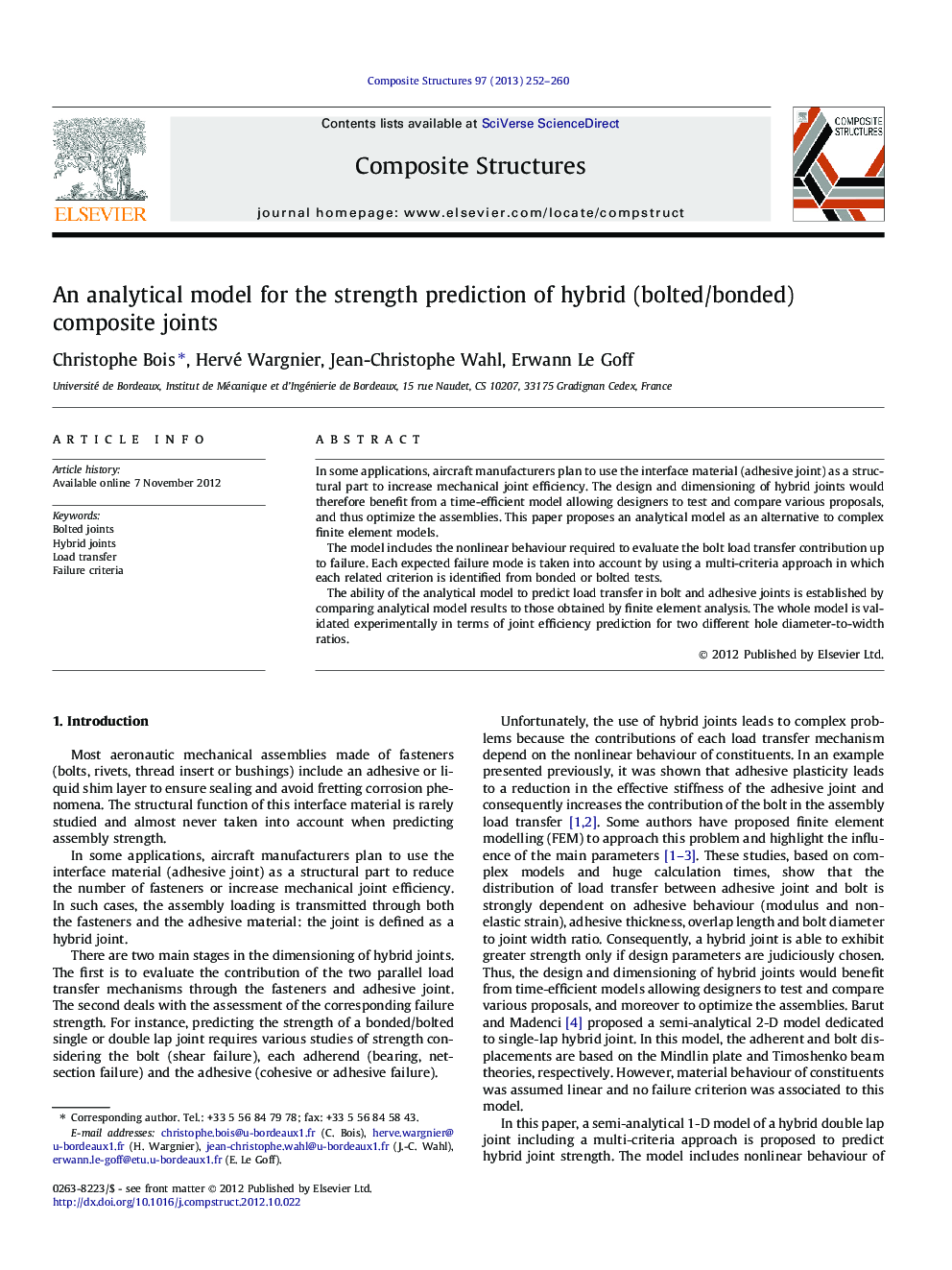| Article ID | Journal | Published Year | Pages | File Type |
|---|---|---|---|---|
| 252110 | Composite Structures | 2013 | 9 Pages |
In some applications, aircraft manufacturers plan to use the interface material (adhesive joint) as a structural part to increase mechanical joint efficiency. The design and dimensioning of hybrid joints would therefore benefit from a time-efficient model allowing designers to test and compare various proposals, and thus optimize the assemblies. This paper proposes an analytical model as an alternative to complex finite element models.The model includes the nonlinear behaviour required to evaluate the bolt load transfer contribution up to failure. Each expected failure mode is taken into account by using a multi-criteria approach in which each related criterion is identified from bonded or bolted tests.The ability of the analytical model to predict load transfer in bolt and adhesive joints is established by comparing analytical model results to those obtained by finite element analysis. The whole model is validated experimentally in terms of joint efficiency prediction for two different hole diameter-to-width ratios.
